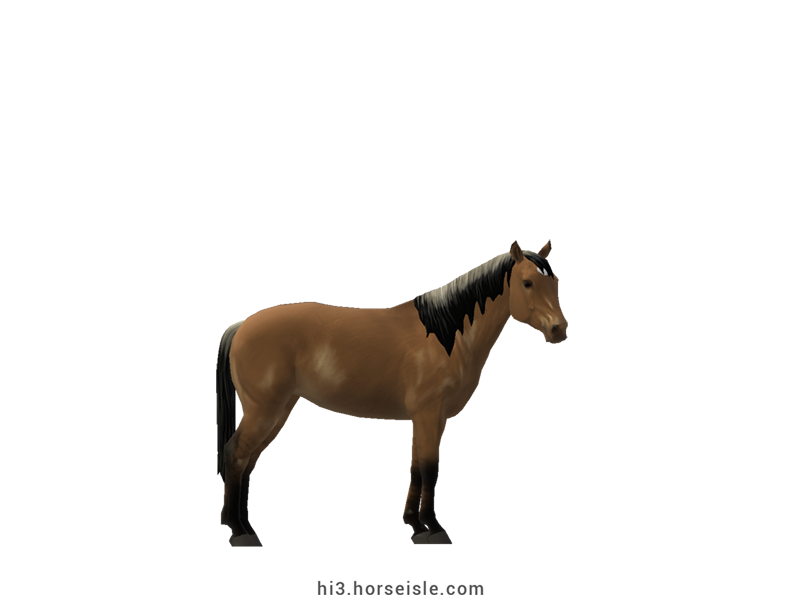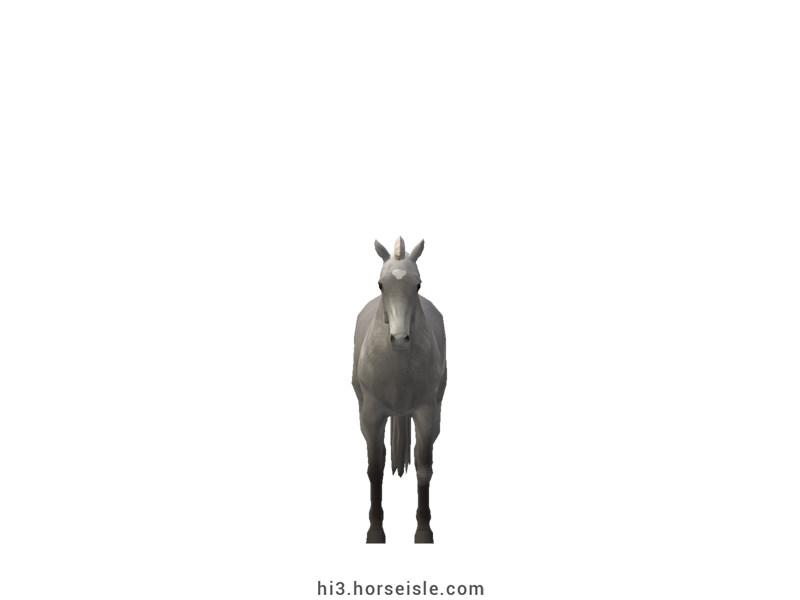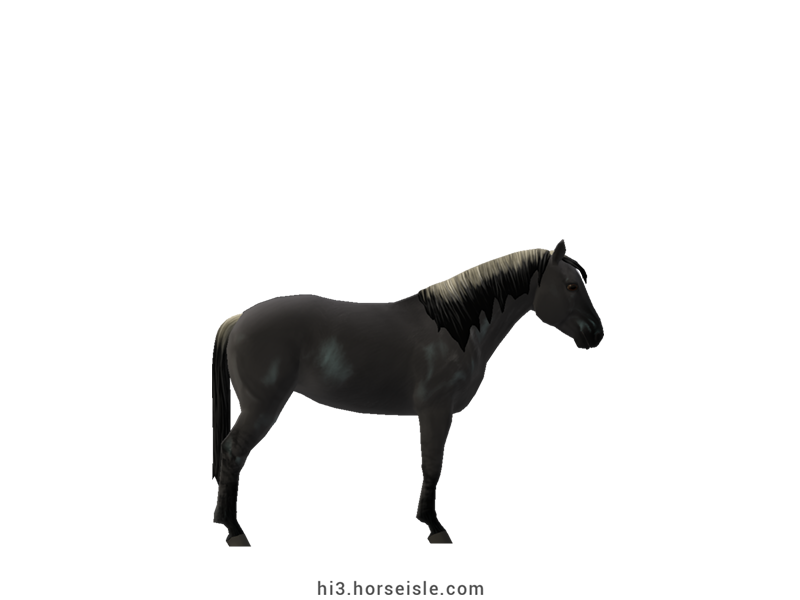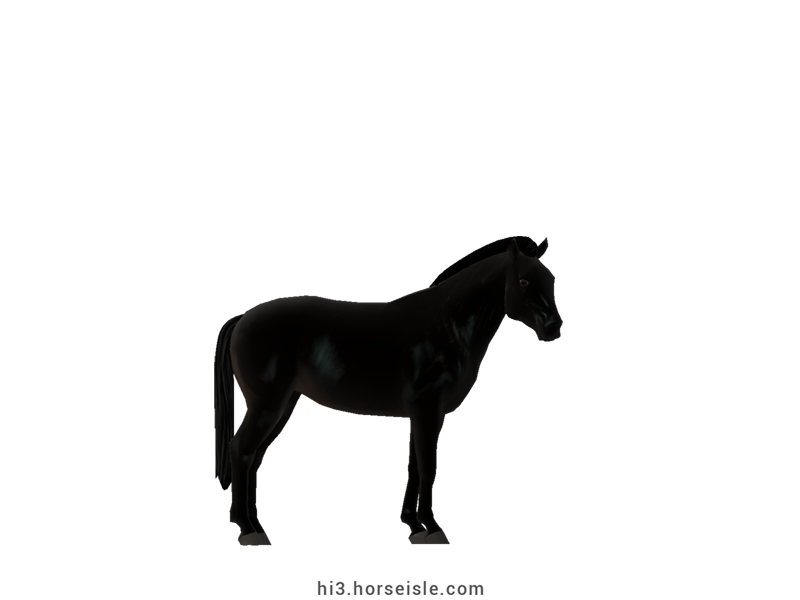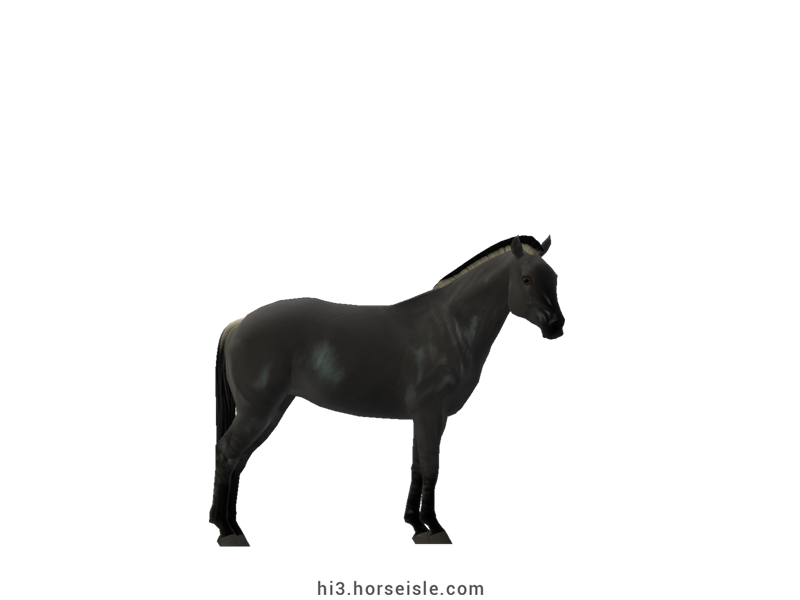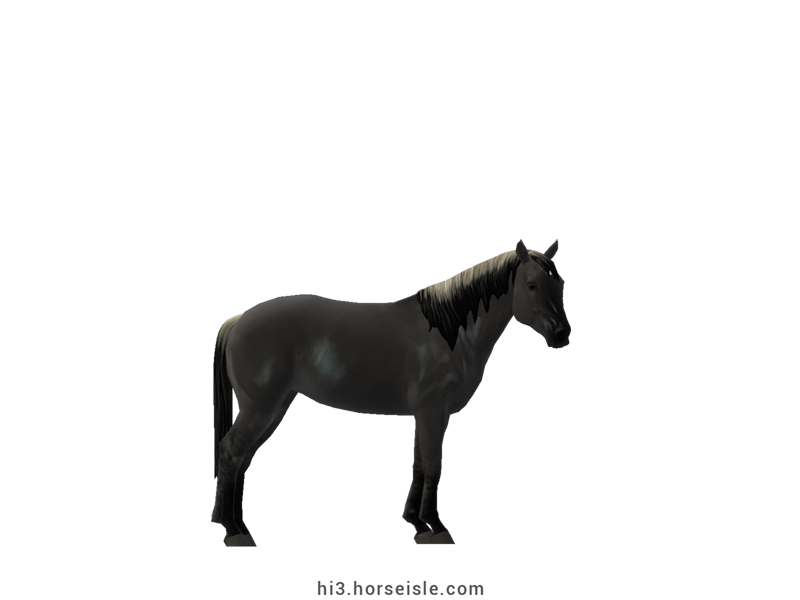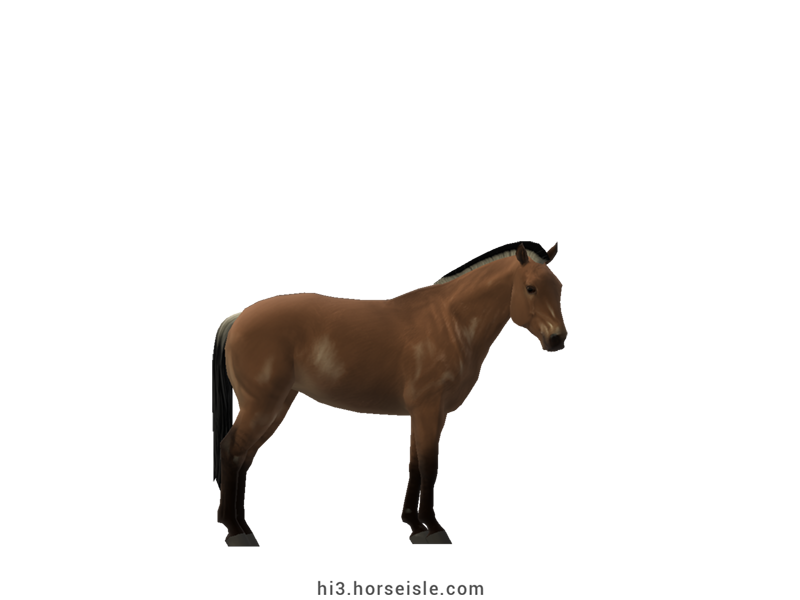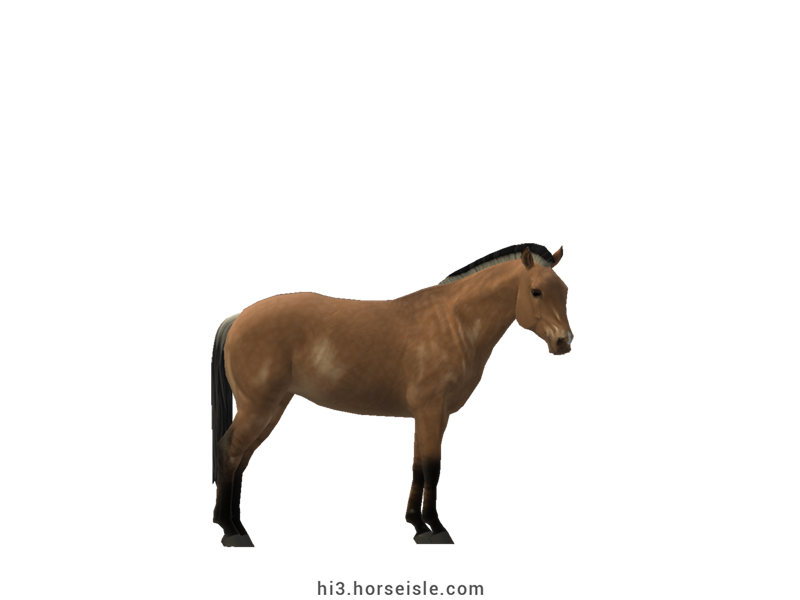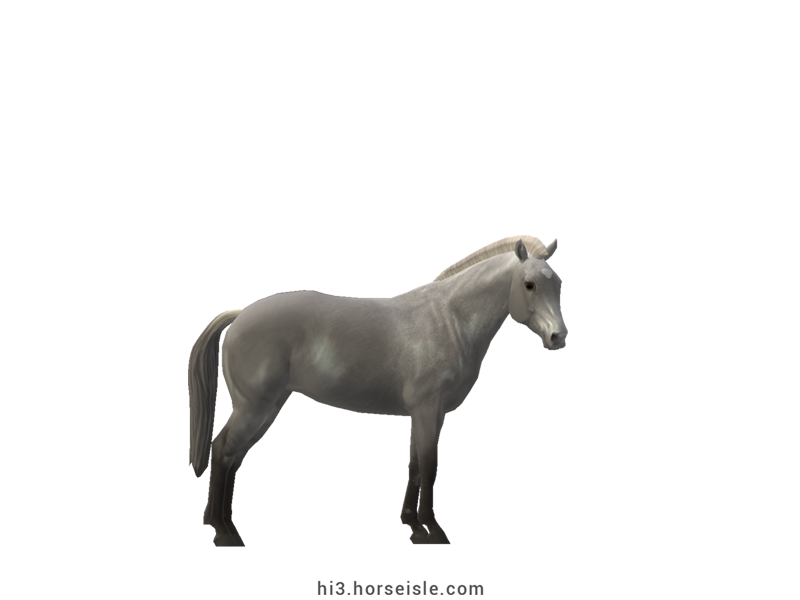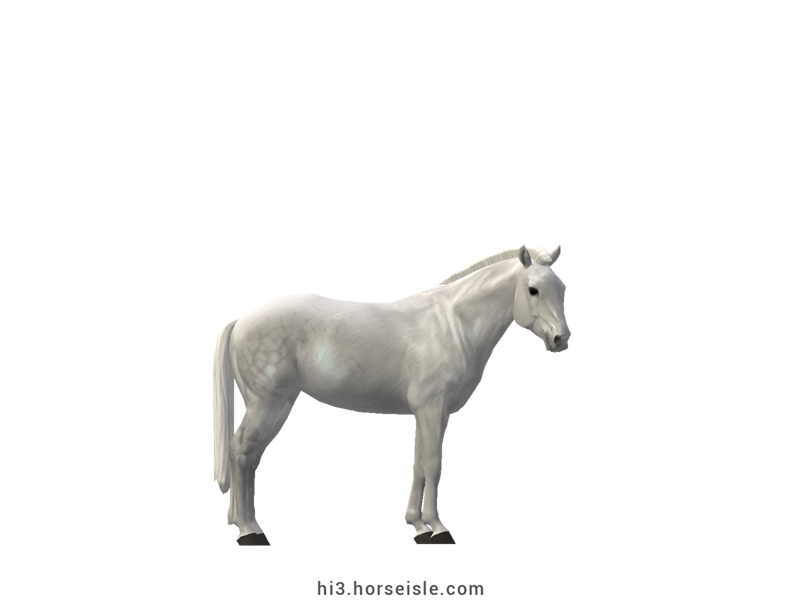Our Massive Real World Equine Reference!
[ INDEX ] Equine Type: Horse Breed: Canadian Rustic Pony (Canadian Rustic) [ PREV ] [ NEXT ]
The Canadian Rustic Pony is a Canadian breed created by crossing Welsh Mountain Ponies, Arabian horses, and Heck horses.
Origins:
Developed in Canada during the 1980s by Dr. Peter Neufeld, the Canadian Rustic Pony was officially recognized as a breed in 1989.
It is often said that the Canadian Rustic Pony was created by mixing Arabians, Welsh Mountain Ponies, and Tarpans or Modern Tarpans. However, this was not entirely the case. While Arabians and Welsh Mountain Ponies were indeed used, the Tarpan was not. The breed which was used was a completely different breed called Heck Horse.
The Tarpan vs. the Heck Horse:
Back in the 18th century, herds of grullo wild horses roamed in Eastern Europe. They were known as Tarpans, and went extinct during the 19th century.
Before that happened, still during the 19th century, Polish breeders supposedly caught many of those Tarpans and crossed them with domesticated horses. Those crossings created the Konik, a breed whose coat is said to be identical to that of the Tarpan, although there is no conclusive proof for that.
Following World War I, the proposed visual similarity between the Konik and the Tarpan attracted the attention of breeders who wanted to recreate the extinct Tarpan. One of them was the Polish professor Tadeusz Vetulani, who released a herd of Konik horses in Bialowieza Forest, in hope that the forest environment will cause the horses to re-develop their 'Tarpan' characteristics.
Another breeding plan took place in Nazi Germany, and was executed by the Heck brothers. As part of that plan, Konik horses from Vetulani's program were taken to Germany and crossed with several other breeds which, according to the Heck brothers, were related to the Tarpan. The result was the Heck Horse, who had a grulla coat and was said to resemble the extinct Tarpan, although there is no proof for that.
Why there's no 'Modern Tarpan':
The term 'Modern' refers to members of a breed who descend directly from the breed in question, and were bred to fit a more modern standard. A good example is the Modern Oldenburg, which was created by crossing Oldenburg horses with sport horses to generate a lighter form of the Oldenburg breed. All Modern Oldenburgs can be traced back, via pedigree, to the original Oldenburg stock.
This is not the case with Heck horses or Koniks, as none of them can be reliably traced back directly to the Tarpan horses who roamed Europe. As of date (2022), there is no horse or breed that is genetically-wise or pedigree-wise verified to fit the criteria of a "Modern Tarpan" or even a "Tarpan" at all (see 'Restoration Tarpan' for more info).
This all means that the horses used for the breeding of Canadian Rustic Ponies were Heck horses, not 'Modern Tarpans'.
The Canadian Rustic Pony today:
Today, the Canadian Rustic Pony exists in small numbers. It is said to be an easy-keeper and an all-around pony with aptitude for jumping.
Breeding:
As shown above, the Canadian Rustic Pony is the product of mixing together Welsh Mountain Ponies, Arabian horses, and Heck horses.
In Horse Isle, however, Canadian Rustic Ponies can be created by crossing a Welara (Welsh x Arabian cross) with a Restoration Tarpan (a breed descended from, and similar to, the Heck Horse). Purebreeding requires crossing two Canadian Rustic Ponies, similar to the manner in which they are bred today.
Conformation:
Canadian Rustic Ponies have a small head with a concave or straight profile, a small muzzle with large nostrils, large eyes, small ears, and a deep and large jaw. The neck is thick and is medium in length, connecting to a short and straight back. The croup is sloping, and the girth is deep.
The mane is short or medium in length, and is often upright. The legs are either clean from feathering or have light feathering.
Performance metrics:
The following are the: range, average, (SD), and MOE of performance metrics of ordered Canadian Rustic Ponies in Horse Isle (not bred ones). In rare cases,horses might have metrics outside of the range. Breeders can produce horses that are beyond this range.
Speed: 13.9-15.2, 14.5 (0.3), 0.05.
Sprint: 42-55, 48 (3), 0.54.
Accel: 0.92-1.12, 1.02 (0.04), 0.01.
Decel: 0.92-1.09, 1.00 (0.03), 0.01.
Jump: 5.16-5.41, 5.29 (0.05), 0.01.
Pull: 1.54-2.11, 1.85 (0.12), 0.02.
Turning: 48.20-60.80, 54.62 (2.89), 0.57.
Reverse: 2.3-2.9, 2.6 (0.1), 0.03.
Stamina: 44.13-48.94, 46.69 (0.91), 0.18.
Reaction: 0.66-0.76, 0.71 (0.02), 0.00.
Coats & Height:
Colors: usually dun, more rarely grey, bay, black, or brown.
Breeding note: chestnut and cream-dilution don't exist in this breed, so breeders should avoid using breeding stock that carries Extension e or cream C.
Additionals: linebacked, sooty, dark mane & tail. The coat is always solid and is always 'linebacked' (has a dorsal line and zebra [leg] stripes).
Breeding note: breeders should avoid using horses who carry genes that are not listed here such as rabicano, roan, silver-dapple, or rare patterns other than dark mane & tail.
Height: 12.2hh to 13.2hh.
Origins:
Developed in Canada during the 1980s by Dr. Peter Neufeld, the Canadian Rustic Pony was officially recognized as a breed in 1989.
It is often said that the Canadian Rustic Pony was created by mixing Arabians, Welsh Mountain Ponies, and Tarpans or Modern Tarpans. However, this was not entirely the case. While Arabians and Welsh Mountain Ponies were indeed used, the Tarpan was not. The breed which was used was a completely different breed called Heck Horse.
The Tarpan vs. the Heck Horse:
Back in the 18th century, herds of grullo wild horses roamed in Eastern Europe. They were known as Tarpans, and went extinct during the 19th century.
Before that happened, still during the 19th century, Polish breeders supposedly caught many of those Tarpans and crossed them with domesticated horses. Those crossings created the Konik, a breed whose coat is said to be identical to that of the Tarpan, although there is no conclusive proof for that.
Following World War I, the proposed visual similarity between the Konik and the Tarpan attracted the attention of breeders who wanted to recreate the extinct Tarpan. One of them was the Polish professor Tadeusz Vetulani, who released a herd of Konik horses in Bialowieza Forest, in hope that the forest environment will cause the horses to re-develop their 'Tarpan' characteristics.
Another breeding plan took place in Nazi Germany, and was executed by the Heck brothers. As part of that plan, Konik horses from Vetulani's program were taken to Germany and crossed with several other breeds which, according to the Heck brothers, were related to the Tarpan. The result was the Heck Horse, who had a grulla coat and was said to resemble the extinct Tarpan, although there is no proof for that.
Why there's no 'Modern Tarpan':
The term 'Modern' refers to members of a breed who descend directly from the breed in question, and were bred to fit a more modern standard. A good example is the Modern Oldenburg, which was created by crossing Oldenburg horses with sport horses to generate a lighter form of the Oldenburg breed. All Modern Oldenburgs can be traced back, via pedigree, to the original Oldenburg stock.
This is not the case with Heck horses or Koniks, as none of them can be reliably traced back directly to the Tarpan horses who roamed Europe. As of date (2022), there is no horse or breed that is genetically-wise or pedigree-wise verified to fit the criteria of a "Modern Tarpan" or even a "Tarpan" at all (see 'Restoration Tarpan' for more info).
This all means that the horses used for the breeding of Canadian Rustic Ponies were Heck horses, not 'Modern Tarpans'.
The Canadian Rustic Pony today:
Today, the Canadian Rustic Pony exists in small numbers. It is said to be an easy-keeper and an all-around pony with aptitude for jumping.
Breeding:
As shown above, the Canadian Rustic Pony is the product of mixing together Welsh Mountain Ponies, Arabian horses, and Heck horses.
In Horse Isle, however, Canadian Rustic Ponies can be created by crossing a Welara (Welsh x Arabian cross) with a Restoration Tarpan (a breed descended from, and similar to, the Heck Horse). Purebreeding requires crossing two Canadian Rustic Ponies, similar to the manner in which they are bred today.
Conformation:
Canadian Rustic Ponies have a small head with a concave or straight profile, a small muzzle with large nostrils, large eyes, small ears, and a deep and large jaw. The neck is thick and is medium in length, connecting to a short and straight back. The croup is sloping, and the girth is deep.
The mane is short or medium in length, and is often upright. The legs are either clean from feathering or have light feathering.
Performance metrics:
The following are the: range, average, (SD), and MOE of performance metrics of ordered Canadian Rustic Ponies in Horse Isle (not bred ones). In rare cases,
Speed: 13.9-15.2, 14.5 (0.3), 0.05.
Sprint: 42-55, 48 (3), 0.54.
Accel: 0.92-1.12, 1.02 (0.04), 0.01.
Decel: 0.92-1.09, 1.00 (0.03), 0.01.
Jump: 5.16-5.41, 5.29 (0.05), 0.01.
Pull: 1.54-2.11, 1.85 (0.12), 0.02.
Turning: 48.20-60.80, 54.62 (2.89), 0.57.
Reverse: 2.3-2.9, 2.6 (0.1), 0.03.
Stamina: 44.13-48.94, 46.69 (0.91), 0.18.
Reaction: 0.66-0.76, 0.71 (0.02), 0.00.
Coats & Height:
Colors: usually dun, more rarely grey, bay, black, or brown.
Breeding note: chestnut and cream-dilution don't exist in this breed, so breeders should avoid using breeding stock that carries Extension e or cream C.
Additionals: linebacked, sooty, dark mane & tail. The coat is always solid and is always 'linebacked' (has a dorsal line and zebra [leg] stripes).
Breeding note: breeders should avoid using horses who carry genes that are not listed here such as rabicano, roan, silver-dapple, or rare patterns other than dark mane & tail.
Height: 12.2hh to 13.2hh.
[ INDEX ] [ PREV ] [ NEXT ]


